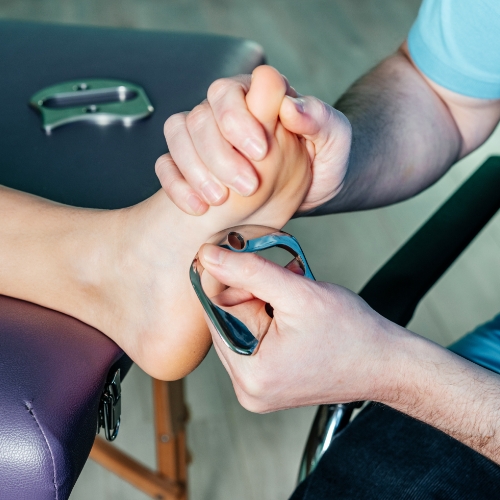
How to Effectively Treat Plantar Fasciitis
Are you tired of experiencing that sharp pain in your arch when you take your first step each morning? Do you notice that the pain in your heel doesn’t seem to go away? You may be dealing with plantar fasciitis. At McCabe and Brady Physical Therapy, our physical therapist will guide you through solutions that work and help you resolve this pain once and for all!
What is plantar fasciitis?
The plantar fascia is a thick band of tissue that runs along the sole and forms a solid mechanical linkage between the heel bone (i.e., calcaneus) and the toes. Plantar Fasciitis is a micro-tearing of the Plantar Fascia that causes pain and limits one’s ability for weight-bearing activity. Plantar fasciitis affects up to 10% of the US population and can limit even the most basic activities.
For years the pain associated with Plantar fasciitis was thought to be associated with chronic inflammation; however, the evidence does not support this concept. Inflammation is rarely observed in chronic plantar fasciitis.
Although anyone can get plantar fasciitis, some common risk factors that make you more susceptible are:
- Reduced ankle dorsiflexion
- Prolonged weight bearing without proper support
- Repetitive stress to the foot and ankle
- Obesity and/or a sedentary lifestyle
- Work-related weight-bearing (i.e., people that stand all day for work)
- Starting or progressing a walking or running program too fast
- Increased mileage for runners
- Pes cavus (high arch) or Pes planus (flat foot)
How physical therapy can help
Our physical therapists can help you resolve your pain and get you on your feet again. We will start with a comprehensive evaluation and a biomechanical assessment to identify the physical factors that may be contributing to your pain.
Next, we will dig into the lifestyle factors that may be contributing to your problem, including asking about your daily routine, your exercise schedule, and the demands of your job.
We will use this information to develop a treatment program that includes targeted manual techniques, transverse friction massage, taping techniques, stretching/mobility work to improve the dorsiflexion range of motion, and strengthening of the foot and calf muscles to get you back to an active lifestyle.
If you are frustrated with persistent plantar fascia pain and want results, call our office today!
Your Next Steps…
Request An Appointment
Receive A Custom Treatment Plan
Work Hard and Progress In Your Recovery
Enjoy Life Pain-Free!

